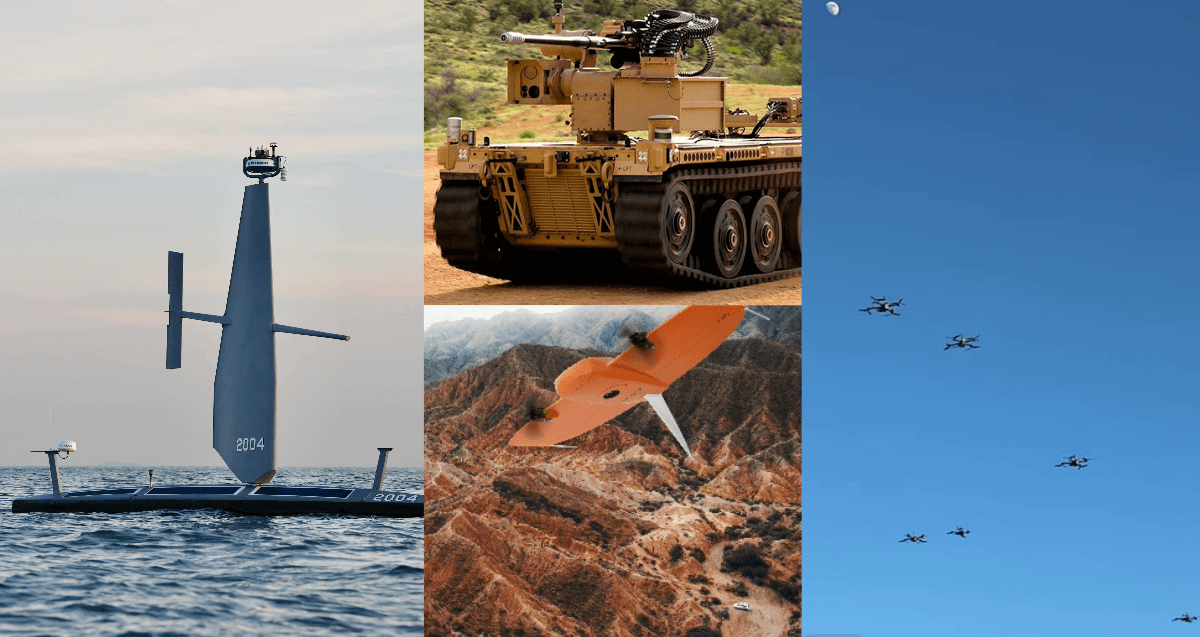WASHINGTON, DC (November 30, 2023) — In August, Department of Defense (DoD) Deputy Secretary of Defense Kathleen Hicks announced the Replicator initiative, a DoD-wide process to accelerate the delivery of innovative capabilities to warfighters at speed and scale. In its first iteration, Replicator focuses on improving the United States’ ability to counter the People’s Republic of China’s military mass by fielding attritable autonomous systems in multiple thousands across multiple domains. Over the last several months, a dedicated team – led by the Defense Innovation Unit (DIU) and working across DoD and with the Combatant Commands and Services – has come together to implement this initiative.
“The Defense Department has already demonstrated that, with concerted senior-level focus, the right technologies can make it across the various valleys of death, from capability development all the way through fielding to the warfighter,” said Deputy Secretary of Defense, Kathleen Hicks. “Replicator is about leveraging authorities that Congress has already granted the DoD to deliver combat-credible capabilities faster and at scale.”
Since September, the newly-established Deputy’s Innovation Steering Group (DISG), co-chaired by Deputy Secretary Hicks and the Vice Chairman of the Joint Chiefs of Staff, Adm. Christopher Grady, as well as the related Defense Innovation Working Group, chaired by DIU’s Director, Doug Beck, has been focusing on three distinct steps in support of fulfilling the Replicator initiative:
Working closely with Indo-Pacific Command (INDOPACOM) to understand the warfighter’s needs and pinpoint mission areas for all-domain attritable autonomy (ADA2) to address.
Surveying existing ADA2 capabilities and systems that are already underway across the Services, and nominating systems that can best support the previously-identified mission sets.
Evaluating these systems against a set of criteria in order to identify which ones Replicator will accelerate first.
“The innovation of the U.S. industrial base provides an asymmetric advantage that aids our decision superiority. My number one priority is to accelerate and deliver the capabilities needed to stay ahead of any competitors, integrated across the joint force and in concert with Allies and partners, in order to fight and win any potential conflict,” said Admiral John Aquilino, Commander, U.S. Indo-Pacific Command.
In addition to the acceleration of existing systems at various life-cycle stages within the services, Replicator will create on-ramps for new systems and capabilities that fill both operational and scaling gaps. The team will approach new-entrant opportunities by signaling clear standards, understanding hardware and software providers can feasibly deliver, and determining key gaps (e.g., a specific mission set or a production constraint) that must be addressed.
To meet this objective, DIU plans to post solicitations related to Replicator on the DIU website, starting in December. DIU anticipates the first solicitation will request new capabilities related to uncrewed aerial systems not currently on contract.
“We have confidence that the parallel efforts to address both existing systems and new-entrant focus areas will enable us to meet the goals for Replicator set forth by the Deputy within the targeted time frame,” said Doug Beck, DIU Director and Senior Advisor to the Secretary of Defense. “Replicator is first and foremost about transforming internal processes to accelerate capabilities in their lifecycle, and the team will be looking at many different systems to accelerate emerging technology that can support our warfighters’ efforts.”
With Replicator, the Defense Department is creating a new state of the art, by leveraging all-domain attritable autonomous systems, which are less expensive, put fewer people in the line of fire, and can be changed, updated, or improved with substantially shorter lead times.
The Russia-Ukraine war illustrates the advantages that technologies like these can have on the modern battlefield at scale and demonstrates what industry is capable of when asked to produce. In October, the DIU met with international partners and allies in Warsaw, along with Ukraine’s defense technology coordination organization, Brave 1, to forge a deeper understanding of what’s happening in warfare and how uncrewed systems are being used by warfighters.
Separately, plans are underway for DIU to host a Technology Summit in the Washington, D.C. area in early 2024 to provide industry with more detail about broad Replicator opportunities, and include workshops on how dual-use commercial technology solutions can be repurposed toward supporting warfighter needs.
